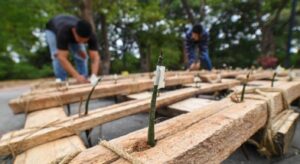 Ecuador’s Guayas River delta, home to the country’s largest mangrove expanse and 3 million people, faces severe deforestation from urban sprawl and shrimp farming, threatening a crucial ecosystem that supports wildlife, absorbs floodwaters, and sequesters carbon. To counter this, a UNEP-backed project in Samborondón is demonstrating that urban development and mangrove restoration can coexist, with community-led planting initiatives successfully reviving coastal forests. This local effort, which highlights mangroves’ cost-effective role as natural coastal defenses and their ecological benefits, serves as a model for global urban areas participating in the UN Decade on Ecosystem Restoration to build climate resilience and protect vital wetlands against mounting climate change threats.
Ecuador’s Guayas River delta, home to the country’s largest mangrove expanse and 3 million people, faces severe deforestation from urban sprawl and shrimp farming, threatening a crucial ecosystem that supports wildlife, absorbs floodwaters, and sequesters carbon. To counter this, a UNEP-backed project in Samborondón is demonstrating that urban development and mangrove restoration can coexist, with community-led planting initiatives successfully reviving coastal forests. This local effort, which highlights mangroves’ cost-effective role as natural coastal defenses and their ecological benefits, serves as a model for global urban areas participating in the UN Decade on Ecosystem Restoration to build climate resilience and protect vital wetlands against mounting climate change threats.
